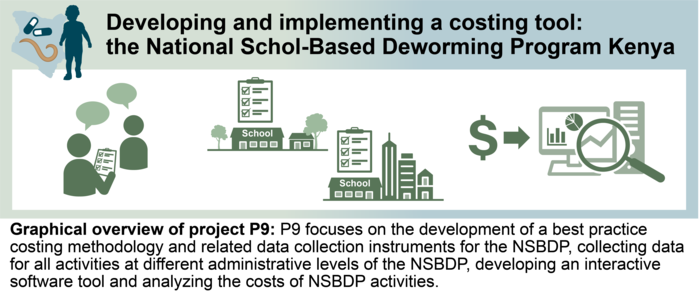P9 - Economics of soil-transmitted helminthiasis control interventions
Supervisor:
Dr. Francisco Pozo-Martin
Lab Address:
Robert-Koch-Istitute, Immunisation/STIKO Unit, Department of Infectious Disease Epidemiology, Seestraße 10, D-13353 Berlin
Project description
Infections due to soil-transmitted helminths (STH) are the most common neglected tropical disease in human populations. In countries where STH infections are a public health risk, key STH infection control interventions include improved sanitation, health education and mass drug administration (MDA), which involves the provision of anthelmintic drugs to at-risk populations regardless of STH infection status. Often, these interventions are implemented by government-led helminth control programs. Reviews of studies exploring the economics of STH control interventions highlight the wide variation in methods used to measure costs and gaps in the availability of high-quality cost data.
The aim of this project is to develop and implement a high-quality costing tool for estimating the costs of government-led STH control programs, using the National School-Based Deworming Program (NSBDP) in Kenya as a case study. The doctoral researcher will, in collaboration with the stakeholders of the NSBDP, develop and refine a best practice costing methodology, a set of data collection instruments and collect relevant cost data at different administrative levels of the NSBDP. She/ he will then develop an interactive software tool that will allow program managers to fully describe and visualize the costs of NSBDP activities under different STH control scenarios. In a final step, the doctoral researcher will analyze the costs of NSBDP activities. The project includes three visits of several weeks to Kenya: one initial visit to develop the costing methodology and the data collection instruments, a second visit to pilot the data collection instruments and a third visit for data collection.
References: Turner et al. 2021, doi: 10.1136/bmjgh-2021-005456; Uzoegbo et al. 2022, doi: 10.1371/journal.pntd.0010822; Turner et al. 2015, doi: 10.1186/s13071-015-0885-3.
